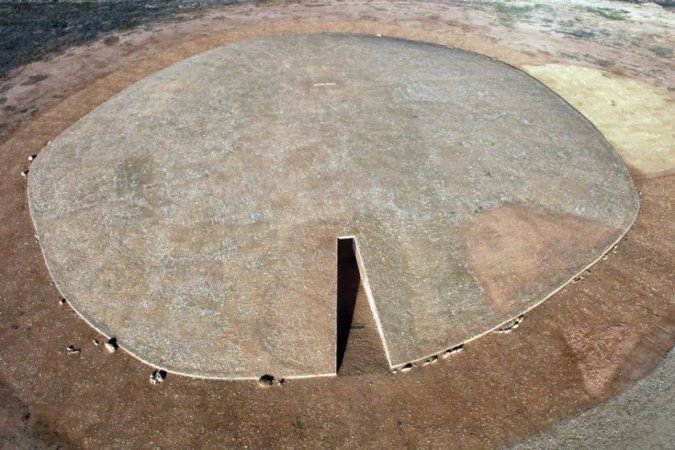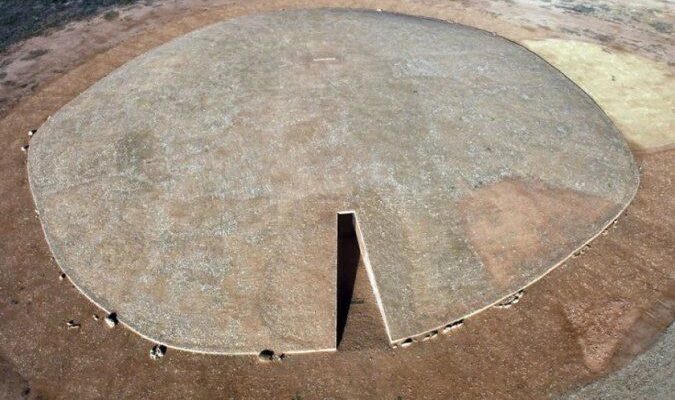
Dolmen de Soto, dated between 3000 and 2500 B.C., belongs to a family of dolmens known as long corridor dolmens. The large size of the 21-meter-high Dolmen de Soto is one of its most astonishing features. It is the largest dolmen that has been found in the Huelva province in Spain. Its width varies depending on the area. Close to the door, it is about 0.8 meters wide, while in the chamber section, it is over three meters wide.
Dolmen de Soto is one of the most important megalithic monuments in the southwest of the Iberian Peninsula

The site was discovered by Armando de Soto Morillas, as he wanted to build a new house in 1922 on his estate. The same year excavation works were initiated on the burial site and by 1924 Hugo Obermaier, one of the most prestigious paleontologists of that time, was asked to perform some research. Obermaier discovered eight buried bodies in a fetal position accompanied by artifacts following which Obermaier published a book describing the results of the excavation and the characteristics of the funerary site.

Its constructive intention indicates two crucial aspects regarding astronomical observation and its ritual use
One of the most important construction features is its orientation towards the east, coinciding with the sunrise at the spring and autumn equinoxes. This constructive intention indicates two crucial aspects regarding astronomical observation and its ritual use, on the one hand, the need to control the cycles of nature, the seasons, since these peasant communities had agriculture and livestock as a basis for subsistence. And on the other hand, the idea of rebirth, regeneration, and spiritual purification rooted in the belief system of these societies.

Another significant feature of Dolmen de Soto is rock art
Most of the vertical blocks and roof slabs are covered in engravings, identified as typical megalithic art from the southern Iberian Peninsula. The engravings follow a technique that uses incision and abrasion with which paintings with different motifs have been inscribed onto the stone.










